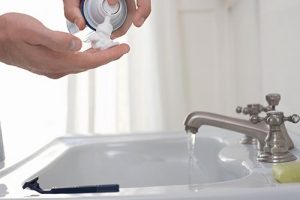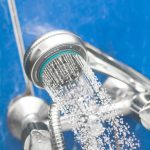Part of general plumbing maintenance is fixing leaking taps. Taps leak usually because the washers within the taps have become worn. Depending on the tap arrangement this may be easy to replace. If you are unsure it’s best to contact WestEnd Plumbing. WestEnd plumbing are your Perth based plumbers and we provide a range of general plumbing maintenance services to Perth homes and businesses.
Read on to read about some simple tips on fixing a leaking tap. This is a general guide only and may not be relevant to your specific tap setup. If you aren’t sure how to go about fixing your leaking taps it’s best to contact the plumbing professionals WestEnd Plumbing.
Types of Taps

monobloc tap (also known as “mixer” tap)

Traditional Tap
Taps come in two basic variants: monobloc and traditional taps. The former has the capacity to regulate both flow and temperature using just one handle. They are fitted with ceramic cartridges, which can be cumbersome to replace. On the other hand, conventional taps feature a washer and an internal rubber seal that wears out over time and require replacement.
Turning the tap handle provides a sure-fire way to identify whether a tap is fitted with ceramic cartridges or rubber washers. Ceramic cartridges are designed to rotate half or a quarter turn. Meanwhile, the traditional taps can rotate more than a half a turn. With conventional taps, the repair work only requires the replacement of a small washer whereas the monobloc entails replacement of an entire valve.
Worn O-rings and washers are some of the most common causes of leaky taps. It is possible that a tap continues to leak even after replacing washers. In such cases, the most likely culprits will be seals and O-rings, which are typically found on the valve body.
Gaining access to the body
To fix a leaky tap, you will need an adjustable spanner, a cross-head or slot screwdriver, reseating kit (if necessary), tap lubricant, cloth and a replacement cartridge or assorted washers. If the leaky tap does not come with an isolating valve, you should start by turning off the water supply. Turn all taps in the house and make sure they have all run dry.
In some cases, the task of unscrewing nuts on old tapes can prove difficult. For this reason, you may need to use a pipe cutter to split the pipes. This allows you to fit new pipes with the aid of flexible push-fit tap connectors. Once the main water is shut and all taps in the house run dry, you can proceed to unscrew the head nut on the leaking tap.
Replacing the Washers
If the tap is a traditional variant, make an effort to replace all three washers. The body washer usually lifts easily. Removing the O-ring on the spindle requires that you completely close the tap until the ring emerges. This allows you to simply pry it out or cut it using a needle nose pliers or knife. The ring stretches and rolls onto the spindle when pried out. In most cases, the tap washers simply slide from the spindle but sometimes they may remain lodged inside.
When working on a monobloc tap, start by detaching the shroud or valve cover (if fitted). Proceed to remove the ceramic cartridge using an adjustable spanner. Gripping and turning it firmly loosens the valve.
Reassembling the Taps
Replace either the washer or ceramic cartridge and lubricate all threaded areas. Turn the main on again after completing the reassembly. Gentle pressure is needed when turning the tap on. It is vital to avoid over-tightening because it can result in damage to the tap seat. If the tap is still leaking after replacing the washer or ceramic cartridge, this means the seat is pitted. Regrinding by a professional will be required to correct the issue. Contact licensed Perth plumbers WestEnd Plumbing today for professional assistance with your leaking taps.






